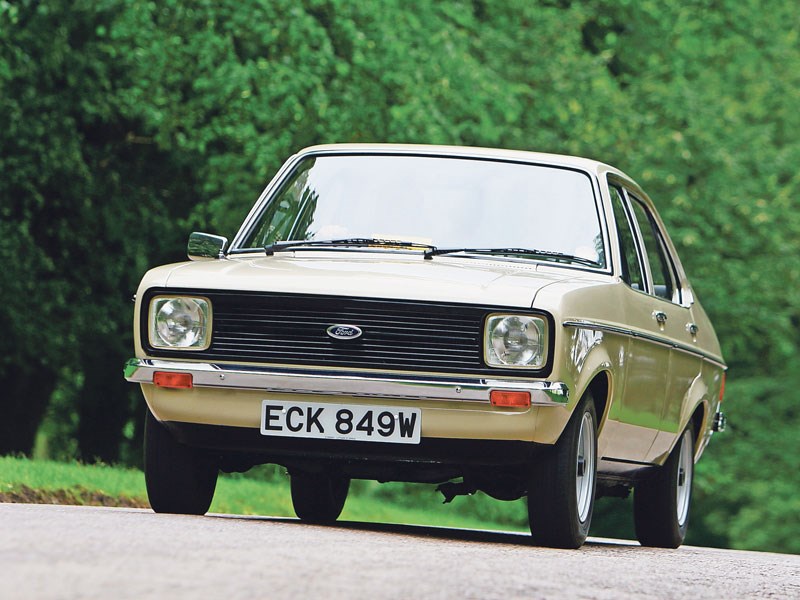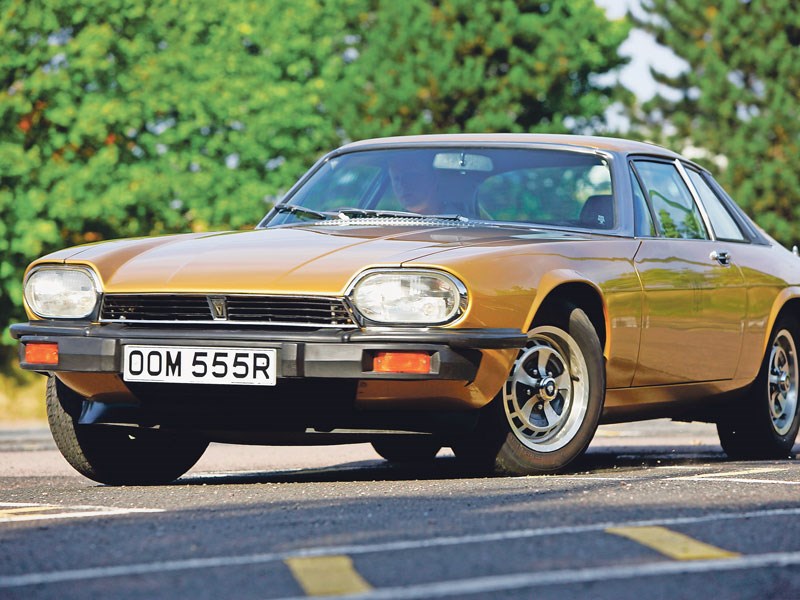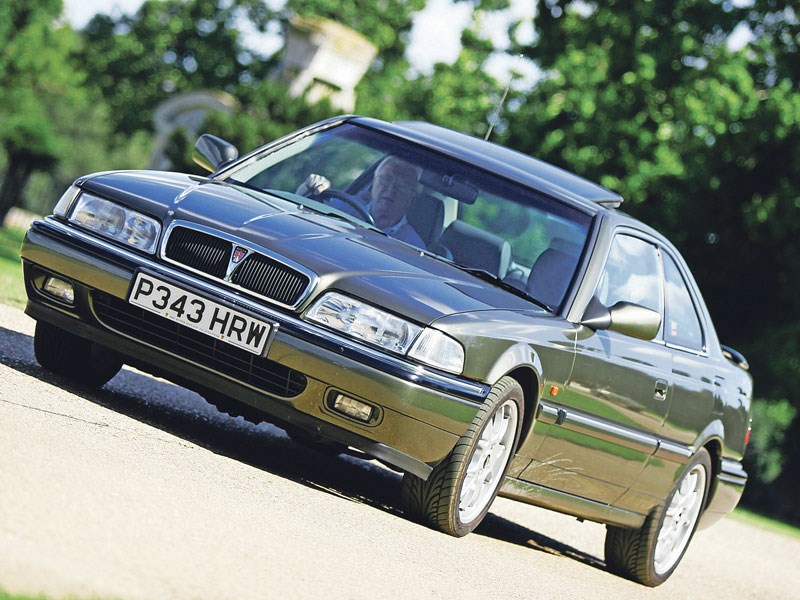The year that brought you screaming Bay City Rollers fans, Monty Python and The Holy Grail and the original Europe referendum also gave Britain something else – thousands of great cars that now qualify for the Government’s tax-exemption scheme.
As of this Friday, 1 April, all cars of this era will be eligible for recognition as Historic Vehicles, meaning that you can go from paying as much as £230 a year to nothing at all virtually overnight.
It’s a hugely important step for 1975 cars. Not only does it give them semi-official recognition as card-carrying classics – meaning they’ll be able to venture into London’s proposed Ultra Low Emissions Zone (ULEZ) where a lot of others can’t, for instance – but the diminished running costs will also make them hot property with buyers.
So we’ve given each of our classic experts a mission to pick out the best 1975 cars you can buy and explain why they make such fantastic classic prospects today. What they’ve come back with includes everything from family favourites to V12-engined grand tourers, so whatever your budget there’s a newly tax-exempt car for you.
We’ve also got the lowdown on how to make sure you don’t miss out, and what to do if you reckon even younger vehicles should be given the same benefits. Whether you’re looking for a 1975 car or already have one in the garage, now’s the time to get out and enjoy them.
Jensen GT
Most Jensen-Healey owners have been celebrating free road tax for a few years; now it’s time for their non-Healey GT mates to join the party.
It was in 1975 that Jensen cashed in on the GTE glory of fellow specialist manufacturer Reliant by developing a sporting estate. The GT used the convertible Jensen-Healey platform but added a fixed roof, hatchback, 2+2 seating and luxury wood-and-leather-insert cabin. Unfortunately, it also lost the Healey part of its name, as Donald and the company had parted company.
That’s a shame, because the GT is actually quite entertaining. The teething troubles that blighted the al-fresco cars had largely been sorted out by the time the GT came to market, so they were more reliable, less prone to rust and definitely more cossetting and practical. The cabin is a little claustrophobic, the rear seating is useless and the styling is a bit gawky, but these are distinctive-looking machines with a big ‘what on earth is it?’ factor.
The 2.0-litre Lotus 16-valve engine gives sparkling performance, the solid roof improves handling and rigidity, and the five-speed Getrag gearbox provides relaxed high-speed cruising.
Fascinating and now tax-free fun!
Toyota Crown
There really is only one choice for the canny buyer looking for a well-equipped, well-built and competitively priced 1975 saloon: a Toyota Crown. Boasting a specification level that far outstripped what you’d find in a Jaguar XJ6 3.4 or a Mercedes-Benz 280SE, it meant long journeys would always be a delight, especially because it was much better to drive than punters gave it credit for when new. Stick the lever in ‘D’, turn up the radio and waft down the motorway, enjoying the light power steering and boss tunes blasting from the standard-fit radio.
Today, you could still be doing just that. While a combination of corrosion and cheese-paring ownership ran many of these lovely, loyal saloons into the ground, they’re still a usable and practical head-turner if looked after properly. They’re as relaxing to drive as ever, and they’ll get a bit of a move on too thanks to that beautifully built inline six. The handling’s not bad either.
And who can deny those looks? They might not be to everyone’s taste (though that actually helps the cause rather than fights against it), but they’re distinctive and endow the Crown with a likeable, brassy personality – rather like a cheerful 1970s barmaid who overdid it with the lipstick, mascara and hairspray. But there’s nothing wrong with that.
Austin-Morris 18-22 Series
Surely there was only one right and proper choice for a 1975 family saloon buyer – head to a BL dealer to get well and truly ‘wedged’.
The new model attracted positive press reviews and boasted innovative engineering and futuristic styling that was like nothing else on the road. Originally known as the BL 18-22 series, with Austin, Morris and – oh glory! – Wolseley versions, all were replaced within six months by the Princess.
Four-cylinder variants started out with the BMC B-series engine, but those blessed with the silky smooth 2227cc straight-six were the ones everyone wanted. Driving one is a joy even today – it’s beautifully flexible and makes an extraordinary, almost primeval sound. The Hydragas suspension provides a good compromise between handling and ride, the power-assisted steering is communicative and the brakes are excellent.
Cruise on the motorway and you’ll be the envy of everyone with a modicum of taste as you bear down on them in your oasis of 1970s safety cage-clad luxury.
MGB (Rubber bumper)
All but the earliest rubber bumper (actually, I think you’ll find they’re plastic) Bs have been denied Historic Vehicle status until now, which is one of the reasons why they’re still such good value.
Leave all your prejudices about that smattering of polyurethane plastered across its snout and rear, and focus on what you can get for less than £5000. It may not be as pretty as the chrome-nosed original, but it’s still one of the best-proportioned traditional sports cars you can get for not a lot of cash.
It tackles B-roads with considerable aplomb, despite its clumsily-raised suspension, and the combination of the muscular twin-carb engine and overdrive in third and fourth makes it a hugely effective motorway cruiser.
Then there’s the the peace of mind that’s part and parcel of all MGs from this era come, thanks to the wealth of club support, specialists and off-the-shelf parts. It’s a pity Top Trumps cards don’t have an ‘ease of ownership’ category, because the MGB would be the outright winner.
The MGB has always been a stalwart of the classic car movement, but now really is the time for the traditionally unloved and all too often dismissed rubber-fronted models to shine.
Volkswagen Polo Mki
Driving around in an early Polo L is a real pleasure. The interior may be basic, but there is more room than you might imagine and you can soon get comfortable – although back seat passengers might not agree. The L is better appointed than the basic model, but its spec is still hardly overwhelming
– front seat headrests anyone?
The 40bhp 895cc engine makes the Polo feel quite nippy around town and a top speed of more than 80mph means that keeping up with modern traffic is no problem. The four-speed manual gearbox is sharp, the brakes – discs at the front, drums at the rear – decidedly less so, but ride quality is acceptable.
For me the Polo is at its best in pure MkI form – its Bertone styling means it’s still a great looking small hatchback. Tracking one down might take a while. When you do, expect to pay between £300 and £3000+, depending on condition. You’re unlikely to find a roadworthy MkI at a bargain price; I found a 1979 example with 48,000 miles on the clock advertised online for just under £7000.
Vauxhall Cavalier MkI
I make no apologies for once again showcasing the Vauxhall Cavalier MkI in one of CCW’s flagship features. I could give you all manner of excuses about it being the car that roundly trounces the Morris Marina dynamically, and that it’s better on the motorway than the Ford Cortina MkIV, its principal rival. But the truth is that it’s the accepted opinion of CCW that the Vauxhall Cavalier MkI is the greatest family saloon of the 1970s because it was my first car and it reminds me of my best years’ driving.
Of course, I’m being silly. But there’s a serious reason for plumping for the trusty old Cav. Along with the Chevette (see page 29), this car did much to restore buyers’ faith in Vauxhall in the UK. After years of producing underperforming cars with a ridiculous propensity to rust, these crisply-engineered, German-designed (and Luton-redesigned) saloons were just what motorists wanted, and sales success assuredly followed.
With good reason. These days, those qualities still shine through. They’re good fun to drive, with excellent handling and devilishly handsome styling.
Ford Escort MkII
There was a time in the late 1990s when no self-respecting student would be seen driving anything other than an Escort MkII. They were just about everywhere, cheap as chips, and no matter whether you went for the 1.1-litre Popular or an RS2000, great to drive. My mates all had one and now I wish I did.
Back in 1975, they were the must-have saloons for all hard-working drivers, adored for their low running costs, sharp styling and slick-shifting gearboxes. And it’s a combination of all of these qualities that make the Escort MkII the cream of the 1975 crop today.
OK, so the low-compression poverty-spec models could take miserable performance to new lows. Given a light sprinkling of rain, most journeys could be made more entertaining with injudicious use of the wheel and the throttle at inappropriate speeds in bends. Such good fun.
Today, the MkII is ensconced as a gilt-edged classic car. They’re hot property, too, with values of the best sporting versions challenging the Lamborghini Miura. I jest, of course, but my dream RS2000 looks set to remain just that.
Lancia Montecarlo
The Lancia Montecarlo – or Fiat X1/20, had history progressed a little differently – puts the rest of the cars here in the shade. Calum’s Jaguar XJ-S? Too thirsty. Richy’s Toyota? Jukebox on wheels. Keith’s Vauxhall Cavalier MkI? Oh, please! On the other hand, this gorgeous two-seater will turn heads everywhere thanks to its supercar styling. Only you will know that it cost less to buy than James’ Escort MkII.
But it’s more than a pretty face and pert rear. There’s strength in depth here, with sweet, uncorrupted steering and a revvy twin-cam engine that’s guaranteed to entertain. Handling is tidy, too, and can be exciting when you’re pushing it – especially in the wet.
Ah, yes. It’s not perfect. The driving position isn’t great if you’re lanky, and there’s not enough headroom. But all those scare stories about skittish handling and the dodgy stopping power of early cars really don’t matter anymore. Anyway, how many of you will be pushing this car to its limits on the way to your favourite Italian car show? Exactly.
Take in the glorious profile as you stare at your reflection in shop windows and enjoy.
Jaguar XJ-S
Taking control of Jaguar’s E-type successor is more of an art form than a driving experience. With that never-ending bonnet stretching towards the horizon and a sense of relaxed pace unlike any Jaguar before or since, the XJ-S is the ultimate definition of a Grand Tourer. Just blipping the throttle on the silky smooth V12 sets the blood pumping.
Put your foot down and the three-speed automatic gearbox channels all 285bhp from the 5.3-litre engine in a manner so refined that your passenger won’t spill a drop of their cocktail. Any good XJ-S ticks all of the boxes – ride comfort is sublime, handling is effortless and the air of serenity within the cabin is utterly addictive.
In today’s world, the XJ-S looks better than ever before, with those controversial buttresses and lozenge-shaped headlights finally coming of age. Talk among disappointed adrenaline-seekers of a cramped and thirsty relic from British Leyland’s reign of build-quality terror is to miss the point entirely.
The XJ-S is succulent in all the right places. It bewitches with its beauty, roars with that glorious engine and it keeps modern whippersnappers at bay with a stance that leaves lesser cars diving for the hedgerow. Buying one now secures you a prime slice of British beef – a serving of affordable Jaguar heritage before prices escalate out of reach.
Vauxhall Chevette
I could have bought one of these in 1975, but failed to do so, because at £1650 it was roughly what I was being paid annually. However, I am now curiously drawn to the Chevette, having been given a lift in one recently by a farming neighbour.
What impressed me most about this particular Vauxhall best-seller was that it had weathered 41 years in the perpetually damp Fens and was still going strong. The driver’s interior door-pull was made from baling twine, the car lurched left under braking (drums front and rear) and there was an awful smell coming from the hatchback area, but I was assured that this wedge-nosed Opel/Vauxhall hybrid had a fresh MoT and had required little professional mechanical intervention over the years.
Its little four-pot sounded OK – from what I could tell over the improvised exhaust repair – and the rest wasn’t all that rattly. I can see myself in one of these, but my neighbour has turned down several sensible offers. Every farmer has his price, though, especially given the unstable sugar beet market.
How to check if your car is tax-exempt
The rolling tax exemption covers cars made in any given calendar year, but the actual date when they become exempt is 1 April. So if you’ve got a 1975 car sitting in the garage, chances are you’ll have been paying tax for the past three months.
The main thing to remember is that the switch to Historic Vehicle status isn’t automatic. You need to take a copy of your V5c registration document, a valid MoT certificate and a tax disc application form to a post office that deals with car tax enquiries.
A good tip is to make sure you keep photocopies of all your correspondence with the DVLA. We’ve heard plenty of tales of forms, documentation and letters getting lost in the post.
The DVLA should issue you with a new V5c registration form that reclassifies your car as ‘Historic’ and it should be the same story with any subsequent V11 road tax reminders you receive. If either refer to it as ‘Private Light Goods’ or ‘PLG’ then get straight back onto the DVLA, because that means it’s still liable for tax. Once the classification has changed, the agency should refund any tax left over, but check it carefully and get in touch with it if you think something’s wrong.
Don’t forget that while Historic car tax costs nothing, the fines for not taxing your classic at least once a year – or putting it on a Statutory Off Road Notification (SORN) – most definitely do not. You’ll still get reminders by post or email. The DVLA admits that there’s a little leeway if your car was registered at the beginning of a given year; if the registration date is between 1 and 7 January there is an assumption that it was manufactured the year before, but it’s well worth finding out whether it qualifies, as it could save you a year’s road tax.
Campaigners: ‘It should be 25 years’
At the last count, more than 18,500 of you had signed an online petition calling for Historic Vehicle tax exemption to be applied to classics when they hit the age of 25 rather than the current 40. That’s the system used when the tax break was originally introduced by the Conservative Government in 1994.
The rolling aspect was dropped by New Labour in 1998, then reintroduced in 2014, but on a 40-year basis rather than 25, and critics say that’s penalising younger classics.
A petition to change the rules, created by Mercedes-Benz R107 SL owner Logan Walker, is available to sign online until 24 July. It has to attract more than 100,000 signatures before it can prompt a Parliamentary debate. ‘Having to pay tax on a car can be the difference between an enthusiast deciding whether or not they can afford to save it,’ says Logan. ‘You only have to look at the number of Mondeo MkIs left to see what happens when bread-and-butter cars aren’t preserved.’
Data released by the DVLA shows that cars eligible for the Historic Vehicle tax break have been saved in far greater numbers than their younger counterparts. While there are around 14,000 classics made in 1972 still on our roads, the figure drops to just 4000 for 1974 cars.
In its response, the Government says it is aware of the economic significance of the Historic Vehicle movement, which supports around 28,000 jobs in this country.
‘The Government is working to deliver a long-term economic plan to repair the public finances and will continue to take the difficult decisions to achieve this goal,’ a Treasury spokesperson says. ‘Therefore, the Government currently has no plans to re-introduce a rolling 25-year exemption for this category of vehicle.’















































